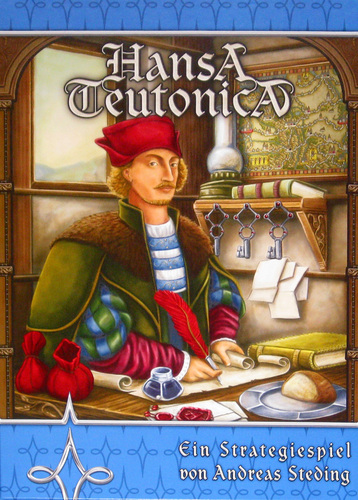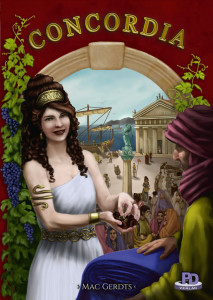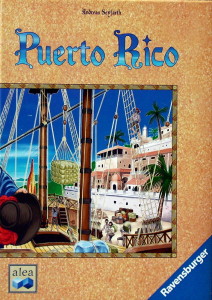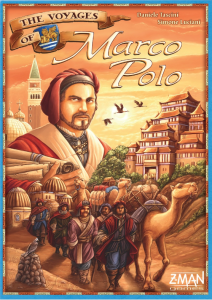- Learning time
- 40 minutes
- First play time
- 120 minutes
Hansa Teutonica
Designed by: Andreas Steding
Hansa Teutonica sees you, the players, trying to establish the best trading network in medieval Germany. If that sounds (and looks) rather bland; fear not – there is plenty of interaction in this game.
The board shows a map of Germany, and each player will have their own individual player board in front of them too – at the start of the game this is populated with a variety of wooden pieces, representing Merchants (discs) and Traders (cubes) that you’ll be trying to move off your board and into the big board as fast as possible. Getting these them off your player board does a variety of things: allowing you to build more trading posts on the board, increasing the number of actions you take each turn, bumping up the points value of your trading network, and even increasing the amount of traders you can place on your turn.
So how do you get your traders off the personal board? Well, every turn you have a number of actions to spend, so you could take one (or more) of them by shifting traders onto the map. Between the various cities are spots for you to place them – representing the establishing of a trading route! If you manage to create such a route by filling the spots from one city to another, you get to place a trader in one of the cities at either end, and this will score you points when anybody else completes a trading route involving the city in question.
Some trade routes allow you to forego establishing a trading house in order to take a one-off benefit that will make your future turns more powerful. And most routes will have a bonus tile that the first player there can grab giving them both a short and long-term reward.
As well as the basic trader-placing action there’s a bunch of other options too: moving your traders on the map; displacing someone else’s trader, and some in-game upgrades or improvements that will improve your productivity on future turns – too much to lay everything out here, but once you’ve got your head around the basic rules, Hansa Teutonica is actually pretty accessible.
The game ends once ten cities have been filled with trading houses, or a player reaches twenty points.
The guru's verdict
-
Take That!
Take That!
There's the potential for quite a bit of Take That - the game's tension comes from the fact that, despite appearances, it's essentially a race (or a bunch of races) where you can actually barge someone off the track!
-
Fidget Factor!
Fidget Factor!
High on a first play, dropping to moderate. You can't be certain of what you'll do until your turn arrives, as the other players' actions may affect your plans. But it's a game where you can plan ahead to a degree. Just be ready to react.
-
Brain Burn!
Brain Burn!
Once that first play is out of the way, Hansa Teutonica isn't too heavy on the cognitive loading. It's more tactical and reactive than laden with rules.
-
Again Again!
Again Again!
The only random factor in Hansa Teutonica is the bonus markers, which are laid out randomly. But plays can be markedly different depending on strategies and what your opponents get up to.











Sam says
It's a very clever design that will hit the sweet spot for players who like the tension of the race, allowing as it does for players to bump each other from trade routes and mess with plans. If you like a game with a tangible theme, this probably isn't it; the idea that you are trading kind of dissipates on playing, and it becomes a fairly abstract battle - but a deeply involving one all the same.